Hing Vs Garlic: Ayurvedic Comparison For Gut Health
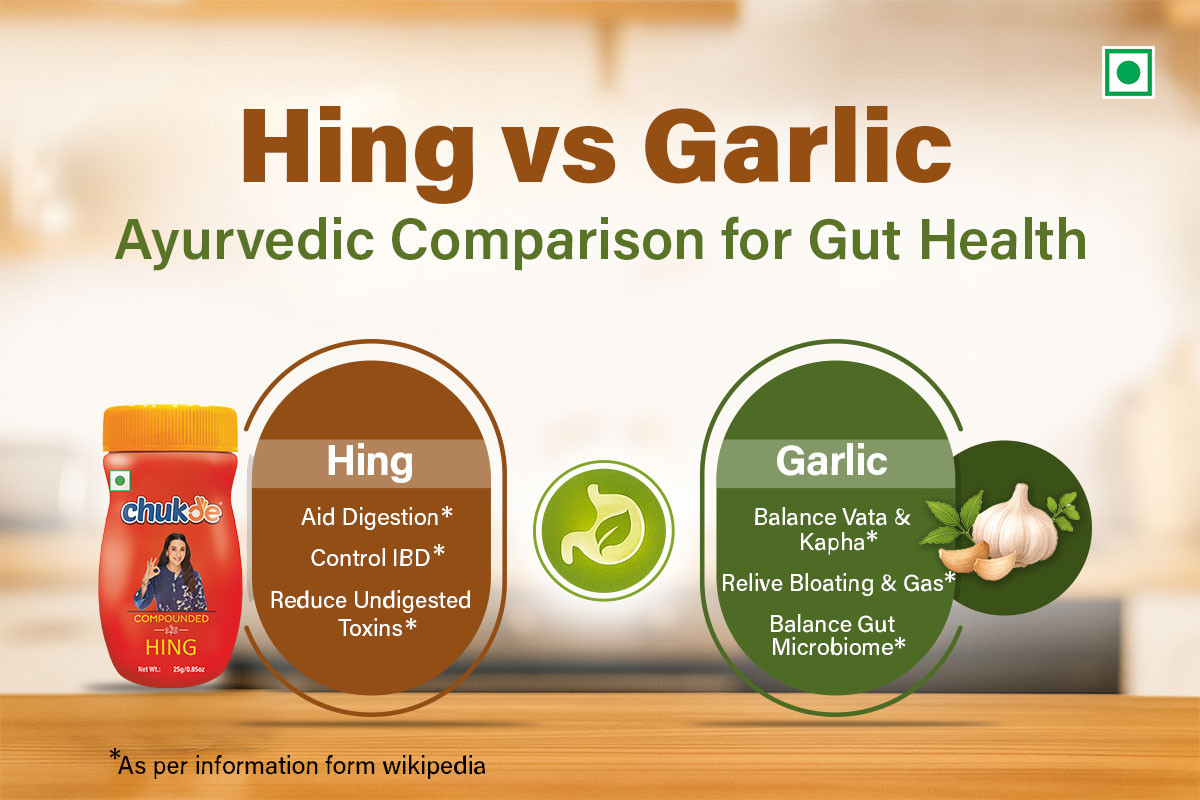
If you’ve ever sat down with your dadi or nani during a stomach ache, chances are they reached for one of two things: a pinch of hing or a clove of garlic. Both have been household remedies in Indian kitchens for generations, but have you ever wondered which one is better for your gut health, especially from an Ayurvedic perspective?
Let’s dive into this age-old kitchen debate.
Hing
Hing, known as asafoetida, is a highly valued spice in Ayurveda for its potent digestive and carminative properties. It is traditionally used to (source):
- Aid digestion and stimulate digestive fire (Agni).
- Relieve gas, bloating, and abdominal pain.
- Control the symptoms of Irritable bowel disease.
- Reduce accumulation of ama (undigested toxins) in the gastrointestinal tract
Traditional Ayurvedic Uses:
- Hingvastaj Churna: A classic Ayurvedic formulation combining hing with other digestive spices (like ginger, black pepper, long pepper, ajwain, and jeera) to enhance digestion, reduce bloating, and treat colic and constipation.
- Hing Tailam or Oil: It is a promising Ayurvedic medicine having a load of essential nutrients and volatile oils. It is highly significant in the treatment of flatulence, stomach problems, impotency, dental problems, cough, cold and impotency.
Scientific and Traditional Backing: Hing helps stimulate enzymes that break down food, relieving from gas and improving absorption. It’s especially useful if you often feel heavy or sluggish after a meal (source).
Real-life tip: Always add a pinch of Chukde Hing to tadka when making dal. It's potent (you'll know from the aroma!), so even a tiny amount does the job. Chukde’s hing is original—no fillers.
Garlic
Ayurvedic Perspective on Garlic (source):
- In Ayurveda, garlic (Lashuna or Rasona) is recognized as a potent medicinal herb with a strong, pungent (katu), and heating nature. It is classified as a rasayana (rejuvenator), meaning it supports longevity and overall vitality.
- Garlic is said to balance Vata (air) and Kapha (earth and water) doshas, but can increase Pitta (fire) if consumed in excess due to its heating properties.
Traditional Ayurvedic Uses (source):
- Garlic can be eaten in many ways: raw, cooked, or even as a supplement. In Ayurveda, it’s often best to combine garlic with cooling ingredients like ghee or honey to balance its heating properties. You can add garlic to soups, curries, or chutneys, or use it to flavor oil for cooking.
- For a simple Ayurvedic remedy, try making garlic-infused oil or garlic honey. Both can be used to boost your immune system or help with digestion.
Scientific view: Garlic supports digestive health by promoting a balanced gut microbiome, thanks to its antimicrobial compound allicin and natural fiber content. Its anti-inflammatory properties soothe the digestive tract, aiding nutrient absorption and regular bowel movements (source).
Pro tip: If you're prone to Pitta issues (acidity, inflammation, ulcers), go easy on garlic. It's very heating and can aggravate your system in summer or if overused.
The Verdict: Hing or Garlic—Which One Wins for Gut Health?
For acute digestive issues—such as gas, bloating, abdominal pain, or IBS symptoms—hing is the superior choice. Its rapid carminative effect, ability to stimulate digestive enzymes, and traditional use for relieving gut discomfort make it the go-to spice for immediate digestive relief.
For long-term gut health and microbiome support, garlic is valuable due to its natural fibers and antimicrobial properties, but it can be too heating for those with sensitive stomachs or Pitta imbalances.
If your primary concern is gas, bloating, or sluggish digestion after meals, hing is more targeted and effective. If you’re looking to support overall gut flora and immune health, garlic offers broader benefits but should be used mindfully if you have a tendency toward acidity.
Can You Combine Hing and Garlic?
Absolutely. Hing and garlic can be combined to create bold, flavorful dishes and offer complementary health benefits. Use them thoughtfully—add hing early and garlic later in the cooking process for best results.
In fact, some of my common dishes, like hing-jeera aloo, blend both. The hing reduces gas, while the garlic boosts flavor and immunity.
Why Trust Chukde for Hing?
Experience the power of originality with Chukde Hing, sourced from the pristine lands of Tajikistan, where the finest quality Hing is grown. Known for its sharp aroma and smooth taste, just one pinch of our Hing is enough to transform an ordinary dish into something truly delicious.
- Natural and extra strong
- Free from added colors, fillers, additives, or preservatives
- Packed with a bold flavor and powerful aroma
- Known to aid digestion naturally
- Perfect for giving your tadka
Whether it’s dal, sabzi, or chutney, Chukde Hing ensures your cooking is always a notch above. Just a little—and your kitchen smells like magic.
FAQs
Can I use both in one meal?
Yes, especially in small amounts. They're synergistic and commonly used together in dals and curries.
Is garlic too harsh for sensitive stomachs?
Raw garlic can be, yes. Try roasting or sautéing it in ghee to make it gentler on the stomach.
How should I store hing?
Keep it in an airtight glass jar, away from heat and moisture. It’s sensitive to air and can lose potency fast.
Is hing safe for kids?
Yes—but always in small, diluted amounts. A pinch in tadka or a water paste for colic is perfect.
Is there a time of day best to use them?
Use hing during the day in cooked meals, especially lunch, which is your peak digestive time. Garlic is best used when your digestion needs support—before a heavy meal or during recovery.
Disclaimer: Information is for educational purposes only and should not be taken as medical advice. We emphasize consulting a doctor before consuming anything in your diet.
Related articles
Checkout in
& get 2% OFF

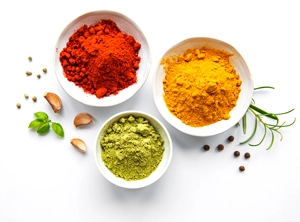

 Cart
Cart
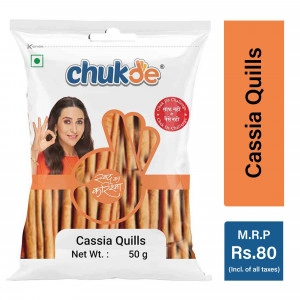




 <% cart_fragment.free_shipping_message %>free shipping
<% cart_fragment.free_shipping_message %>free shipping






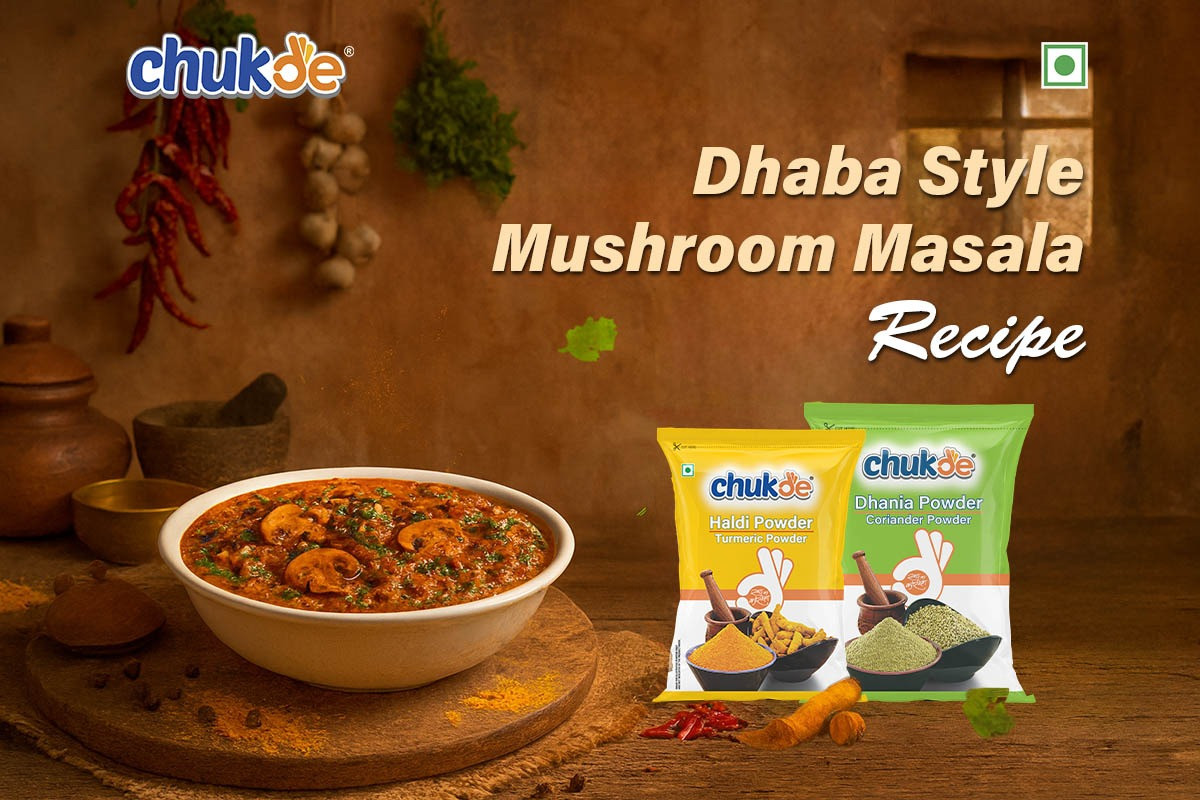
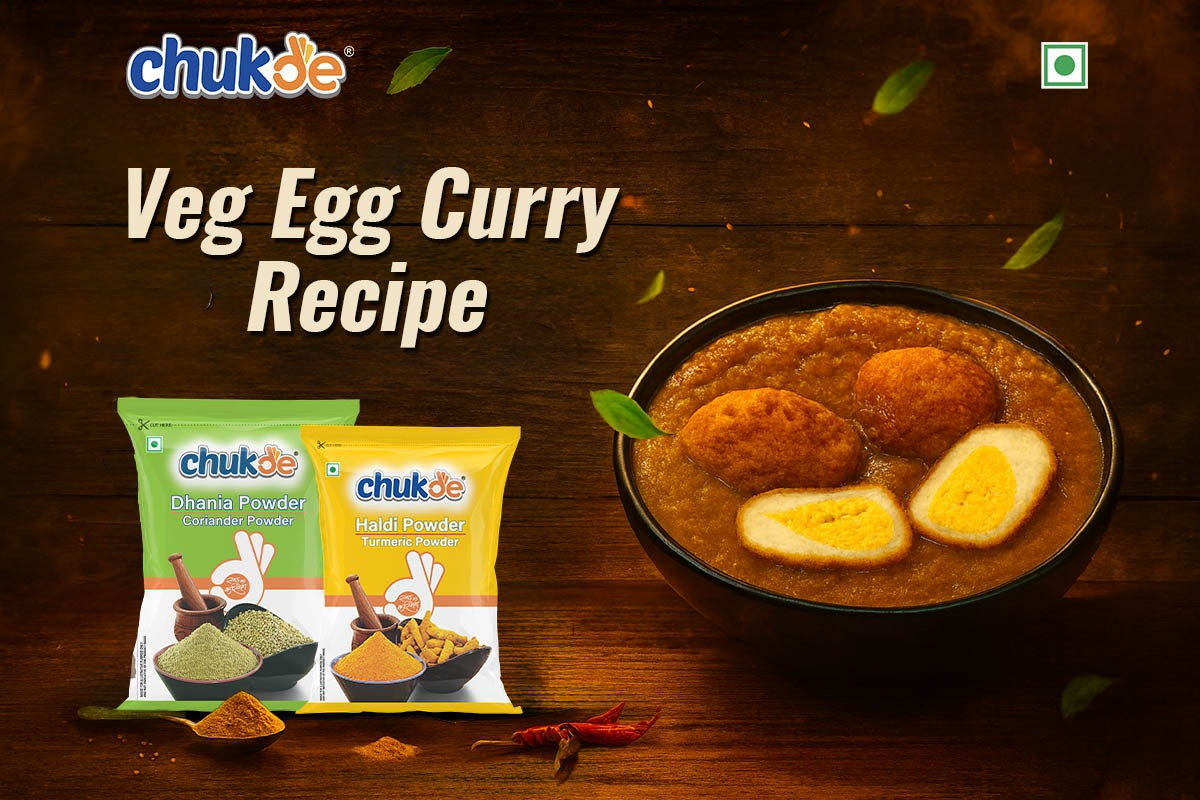
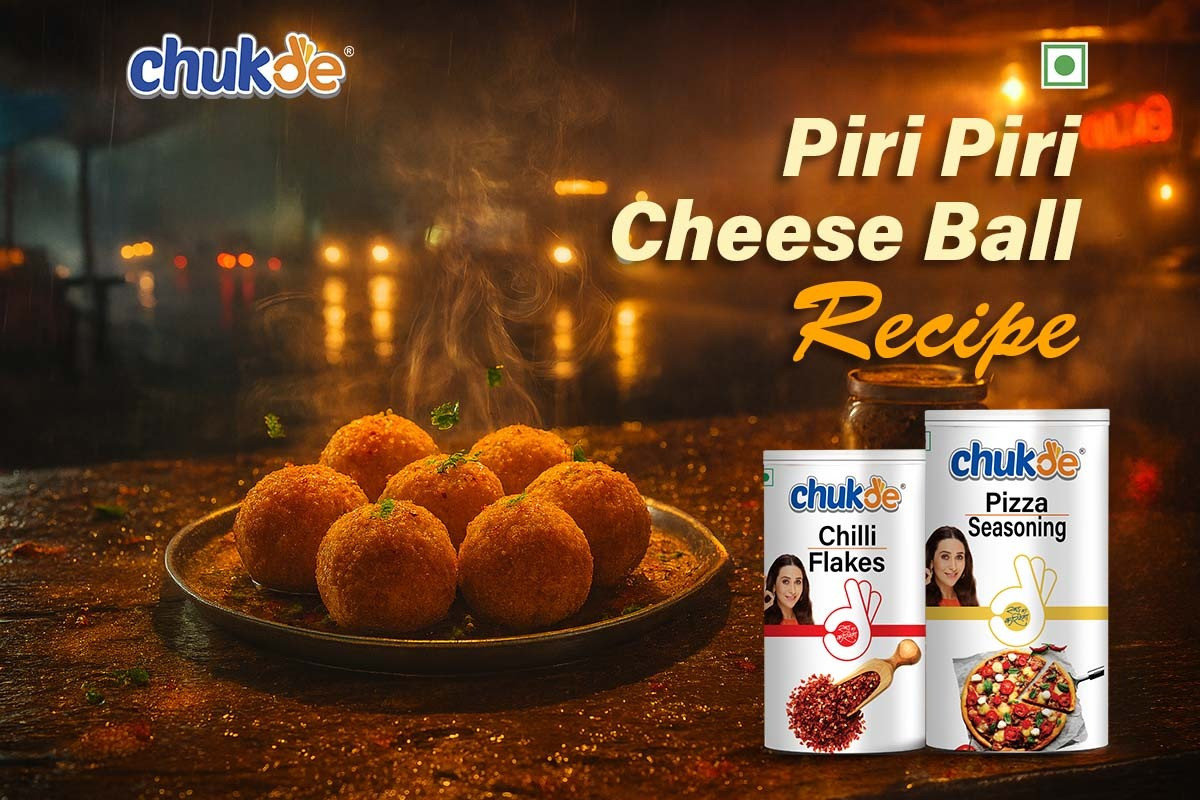
 TBS points:
TBS points: 


 100% safe
checkout
100% safe
checkout




